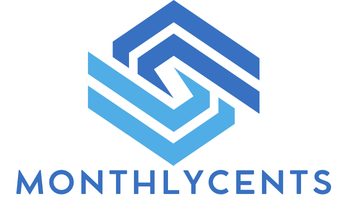Understanding Non-Profit Organizations in the UK
When examining non-profit basics in the UK, it’s crucial to recognize the diversity of organizational structures available. These corporations are typically structured as charities, community interest companies, or cooperatives, each with distinct legal and tax implications. Charities benefit from tax reliefs but must comply with stringent regulations, whereas community interest companies present a flexible option with the ability to operate with both social and business goals. Cooperatives, conversely, prioritize democratic processes among members.
The incorporation of renewable energy organizations within the non-profit sector has significant importance. As the world grapples with climate change, these entities play a pivotal role in promoting sustainable solutions and advancing eco-friendly technologies. In the UK, such organizations often focus on community-related projects, driving local investment and generating awareness.
Also to read : Unlocking Financial Assistance: A Comprehensive Guide for New Small Businesses in the UK
Forming a non-profit in the renewable sector offers several benefits. Primarily, it provides access to various funding sources unavailable to for-profit companies. Grants and donations are more accessible to non-profits dedicated to societal improvements, thus enhancing project feasibility. Additionally, non-profits in renewable energy enjoy trust and credibility among communities, which fosters collaboration and volunteer support. This model is vital for those committed to advocating for environmental sustainability and fostering lasting positive impacts.
Legal Requirements for Non-Profit Registration
Embarking on the journey of non-profit registration in the UK involves a thorough understanding of the legal requirements and processes. Beginning with the detailed steps for registration, potential non-profit founders must first decide on the organisational structure, commonly a Charitable Incorporated Organisation (CIO) or a Charitable Company. This choice is fundamental as it dictates further legal obligations.
Have you seen this : Navigating Compliance: Essential Strategies for Shipbuilding Companies to Adhere to UK and Global Maritime Laws
Once the structure is determined, you must gather the necessary documentation. Essential documents include the governing document, often called a constitution or articles of association. This document outlines the purpose of the charity, the appointment and responsibilities of trustees, and operational procedures. Additionally, details of the trustees, including identification and proof of eligibility, are required.
To further navigate through the registration process, it is imperative to engage with the appropriate regulatory bodies. In England and Wales, the Charity Commission is the principal body overseeing non-profit registration. For organisations in Scotland and Northern Ireland, engagement with OSCR and CCNI respectively is required.
Bear in mind that each regulatory body may have specific reporting requirements. Ensuring compliance with these legal requirements increases the likelihood of successful non-profit registration.
Developing a Mission and Vision Statement
Creating a clear mission statement and vision statement is fundamental for any successful organisation, particularly within the renewable sector. Mission statements are declarations of an organisation’s core purpose and values. They guide everyday operations and decisions, helping align efforts toward a common goal. On the other hand, a vision statement outlines long-term aspirations, offering a sense of direction and a picture of future success.
In the renewable sector, an effective mission statement might read: “To harness the power of renewable resources to benefit global communities and foster a sustainable future.” This encapsulates the organisation’s core purpose and ethical commitment. A vision statement in this sector might articulate: “To be the leading innovator in sustainable energy solutions worldwide.”
When crafting impactful statements, clarity is crucial. Use language that is both inspirational and specific. Consider the following tips:
- Identify core values: What principles guide the organisation?
- Define long-term goals: What is the ultimate aim?
- Engage stakeholders: Ensure alignment with key parties.
By investing time in developing these statements, organisations solidify their identity and direction, fostering greater unity and motivation among team members.
Funding Options for Renewable Energy Non-Profits
Securing funding sources is vital for renewable energy non-profits to propel their missions effectively. These organizations often rely on a blend of grants and donations to maintain operations and support sustainable energy projects.
Grants, usually provided by governments, private foundations, or international bodies, are essential funding sources. These entities often support projects that demonstrate a clear impact on sustainability and community welfare. To successfully acquire grants, organizations must meet specific eligibility criteria, which may include demonstrating technical expertise, having a robust financial plan, and specifying project outcomes.
Donations from individuals and corporations complement grants. These contributions can be solicited through targeted fundraising campaigns. Effective strategies include: establishing a compelling narrative to connect with potential donors, utilizing social media platforms to expand reach, and hosting events that align with donor values in sustainable energy.
Transparency and accountability in financial reporting are critical in securing and maintaining these funds. Non-profits must provide detailed reports on fund utilization, demonstrating how donations and grants are channeled into successful outcomes. Being forthright with financial information builds trust with donors and stakeholders, encouraging ongoing support and investment in renewable energy initiatives.
By leveraging diverse funding strategies and upholding integrity in financial practices, renewable energy non-profits can thrive and make a lasting impact.
Compliance and Governance
Navigating the landscape of non-profit compliance in the UK requires awareness of essential regulations. These organisations must adhere to guidelines set forth by the Charity Commission, ensuring transparency in operations and proper management of funds. Compliance is not merely a procedural task; it upholds the integrity and accountability fundamental to non-profits’ missions.
Understanding different governance models is crucial for non-profits to sustain their operations effectively. A prevalent structure is the board of trustees model, in which trustees hold pivotal roles in outlining strategic directions and ensuring that the organisation fulfills its legal obligations. These individuals must possess a mix of skills and experiences, ensuring diverse perspectives guide decision-making processes.
To maintain high ethical standards, non-profits should implement best practices in governance and compliance. Regular audits, adherence to financial reporting standards, and transparent communication with stakeholders serve as pillars for integrity. Furthermore, non-profits should foster a culture of accountability, where compliance is created and championed by all, from trustees to volunteers.
Ultimately, integrating robust governance and compliance strategies ensures non-profits can engage stakeholders, achieve their charitable goals, and make lasting impacts in their communities. By prioritising ethical standards and operational transparency, non-profits build trust and credibility, essential elements for long-term success.
Engaging Stakeholders and Building Partnerships
Engaging stakeholders in renewable energy initiatives is critical to success. Identifying key stakeholders involves recognizing individuals, groups, or organizations with vested interests in your energy projects. Begin by mapping out who these stakeholders are and analysing their influence and interest levels. This process ensures effective targeting and prioritisation.
Once identified, employing techniques for effective communication is paramount. Tailor your messaging to align with stakeholders’ values and concerns. Open dialogues foster transparency and trust, serving as the groundwork for collaborative partnerships. Regular meetings and updates keep all parties informed, reassured, and engaged in the initiative’s progress.
Building partnerships with other organizations and communities offers multiple benefits. Collaborative efforts often result in shared resources, reduced costs, and increased expertise. Moreover, joint ventures can boost project credibility and scalability. For instance, aligning with local communities can enhance social acceptance and facilitate smoother project implementation.
In essence, successful stakeholder engagement hinges on strategic relationship building. Prioritising open communication creates an environment where partnerships thrive, fostering innovation and accelerating progress. By leveraging each partner’s strengths, stakeholders collectively work towards a more sustainable future, optimising outcomes for all parties involved.
Marketing and Outreach Strategies
Creating a robust marketing plan is crucial for non-profit organisations aiming to enhance their visibility and gain support. Non-Profit Marketing serves as the backbone to drive awareness about an organisation’s mission and goals. A well-crafted strategy not only aids in reaching potential supporters but also in retaining existing ones.
The digital era offers vast opportunities for outreach. Social media and online platforms are powerful tools that non-profits can leverage. These platforms allow organisations to create engaging content that can reach a broader audience with minimal cost. By sharing success stories, upcoming events, and educational content, non-profits can foster a strong online presence and community connection.
Moreover, engaging the community through events and educational programs is integral to Outreach efforts. Hosting workshops, seminars, or open houses can provide personal interaction, creating a sense of belonging among community members. These events not only inform and educate but also encourage participation and collaboration.
It’s also essential that non-profits remain accessible and open for feedback, demonstrating a commitment to their community’s needs. By balancing online and offline initiatives, non-profits can effectively broaden their reach and deepen their impact. With strategic planning and execution, non-profit marketing and outreach efforts can significantly contribute to fulfilling their missions.
Examples of Successful Renewable Energy Non-Profits
In the United Kingdom, several leading non-profits have made remarkable strides in promoting renewable energy initiatives. These organisations serve as inspirations for creating sustainable futures. Among such pioneers, one prominent case study is the Community Energy England, a non-profit that supports and represents community energy organisations. Their approach in leveraging local resources and expertise has proven instrumental in obtaining renewable energy goals, capitalising on community engagement as a pivotal force.
Another vital case study is Repowering London, a non-profit that has turned heads with its unique projects focused on solar energy. Their initiatives shine a light on the effectiveness of integrating social benefits with energy efficiency, promoting energy democracy, and local empowerment.
These successful initiatives offer crucial lessons:
- Community Engagement: Harness the power of local people to foster enthusiasm and responsibility over renewable energy projects.
- Diverse Funding: Adopt varied financial strategies, including grants and public funding, to ensure project feasibility.
- Partnership Collaborations: Establish robust partnerships with local governments, businesses, and residents to strengthen project impact and reach.
By analysing these case studies, emerging non-profits can draw inspiration, adopting innovative strategies and frameworks to champion renewable energy in their domains.
Resources and Tools for Non-Profit Management
Managing a non-profit organisation effectively requires a variety of specialised non-profit resources and management tools. These tools are indispensable in streamlining operations and ensuring that organisational goals are met efficiently. Here are some recommended resources to consider:
Recommended Tools for Effective Non-Profit Management
Non-profits can benefit significantly from software tailored to their unique needs. Fundraising platforms like DonorPerfect or Kindful help in tracking donations and managing donor relationships. For project management, Asana and Trello are excellent choices, offering streamlined task allocation and progress tracking, creating more structured workflows.
Useful Templates for Planning, Compliance, and Reporting
Efficient data management plays a crucial role in non-profit success. Utilising pre-designed templates for financial reporting, grant applications, and strategic planning can simplify these processes. Templates available in software like Microsoft Office or Google Sheets are easily customisable to fit specific needs, enhancing compliance and transparency.
Sources for Ongoing Education and Best Practices
Staying up-to-date with the latest trends is vital. Many organisations offer resources for continuous learning. Webinars, online courses, and workshops provided by institutions like Coursera or LinkedIn Learning can help leaders and staff develop skills while understanding industry best practices. Additionally, subscribing to newsletters from leading non-profit forums can keep you informed about emerging challenges and solutions in the sector.











